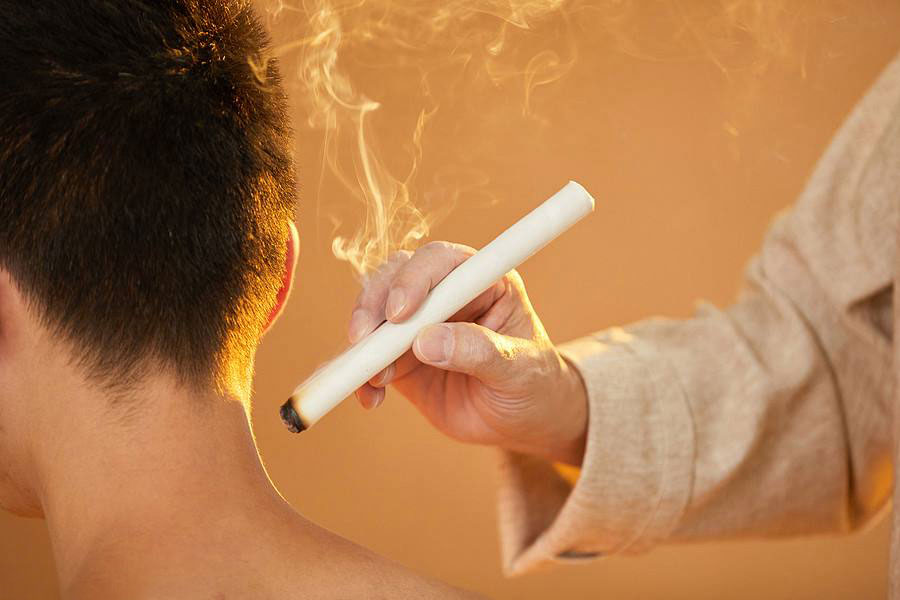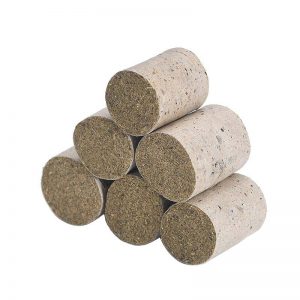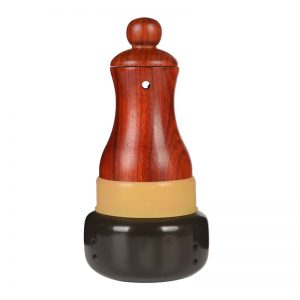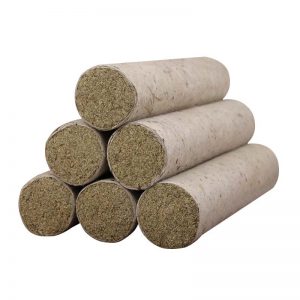Myofascial pain, also called myofascitis, refers to pain caused by inflammation of muscle and fascia. It often occurs on the neck, back and waist, as well as in frequently used muscle groups. This disease is common among manual laborers who work in cold, damp environments. Another important cause is chronic overuse of the muscles, which is common in people who use their backs to lift heavy objects. Other factors include viral infection, allergic reactions, and psychological factors.
Myofascial pain is a type of bì syndrome in TCM. It can be caused by living in damp environments, a fondness for cold drinks or being exposed to cold after working, which allow wind-cold-damp to invade the body. This stagnates qi and blood, and blocks circulation in the flesh, sinews, channels and collaterals. Likewise, overwork can damage the sinews to cause blockage of qi and blood in the channels and collaterals. Finally, a weak constitution or qi and blood deficiency can lead to poor nourishment of the sinews.
Clinical manifestations of myofascial pain
- Trigger points are painful areas that are relatively fixed and painful when pressed. The pain is usually sharp and transmits distally.
- Regional pain is confined to a certain region.
- Pressing affected muscles in the area of pain can cause a band-like sensation with sharp tenderness at certain places along this band.
6 Acupuncture points for myofascial pain
The basic therapeutic principles are to dredge and unblock the channels, invigorate blood, and relieve pain. According to The Yellow Emperor’s Internal Classic, “When[the disease is] in the sinews, [choose acupoints that] govern the sinews.”Thus mainly local tender points and related channel points should be selected for myofascial pain. In shoulder pain, for example, tender points on the shoulders and back should be used, as well as acupoints on the hand Taiyang, hand Shaoyang and hand Yangming channels. Jiaji points on the back are also often used, along with points of the foot Taiyang bladder channel and the Du Mai.
1. BL 43 Acupoint (Gaohuangshu)
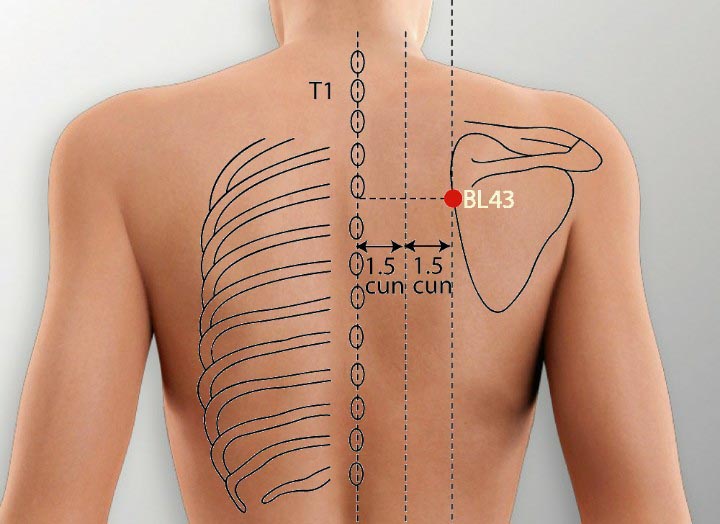
Location: On the back, in the depression below the spinous process of the fourth thoracic vertebra, 3 cun lateral to the posterior midline.
Effect: Unblocks the collaterals, relieves pain.
2. GV 9 Acupoint (Zhiyang)
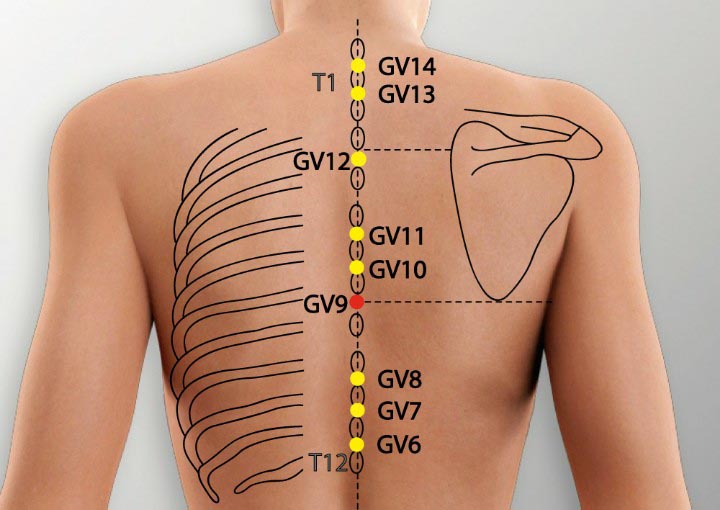
Location: On the posterior midline in the depression below the spinous process of the seventh thoracic vertebra.
Effect: Warms the Du Mai, unblocks yang, relieves pain.
3. GV 3 Acupoint (Yaoyangguan)
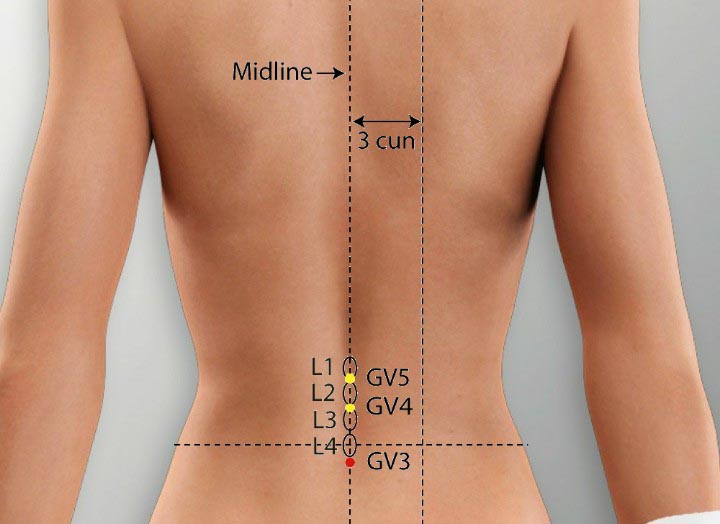
Location: On the posterior midline in the depression below the spinous process of the fourth lumbar vertebra.
Effect: Warms the Du Mai, dissipates cold, unblocks the collaterals, relieves pain.
4. BL 25 Acupoint (Dachangshu)
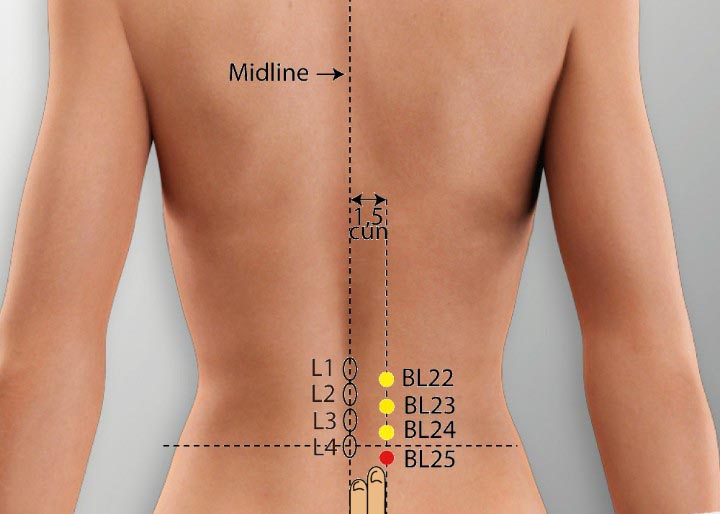
Location: On the lower back 1.5 cun lateral to the posterior midline, level with the lower border of the spinous process of the fourth lumbar vertebrae.
Effect: Rectifies qi, unblocks the collaterals, relieves pain.
5. LI 10 Acupoint (Shousanli)
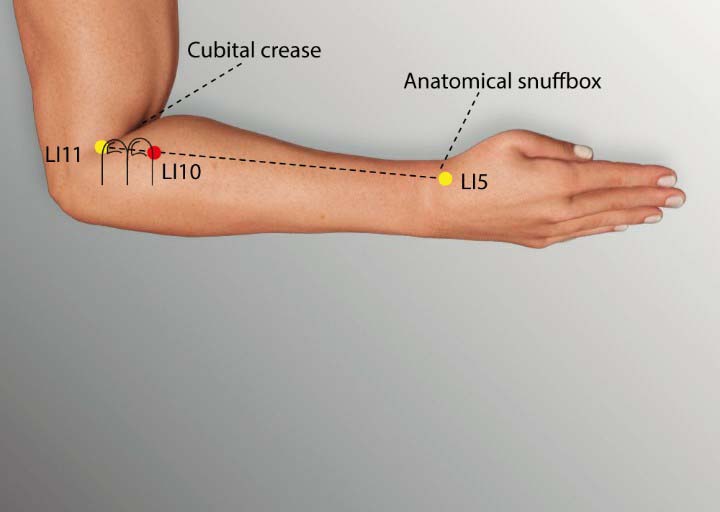
Location: On the radial side of the dorsal forearm on the line connecting LI 5 and LI 11, 2 cun below the elbow crease.
Effect: Dredges the channels, unblocks the collaterals, relieves pain.
6. GB 34 Acupoint (Yanglingquan)
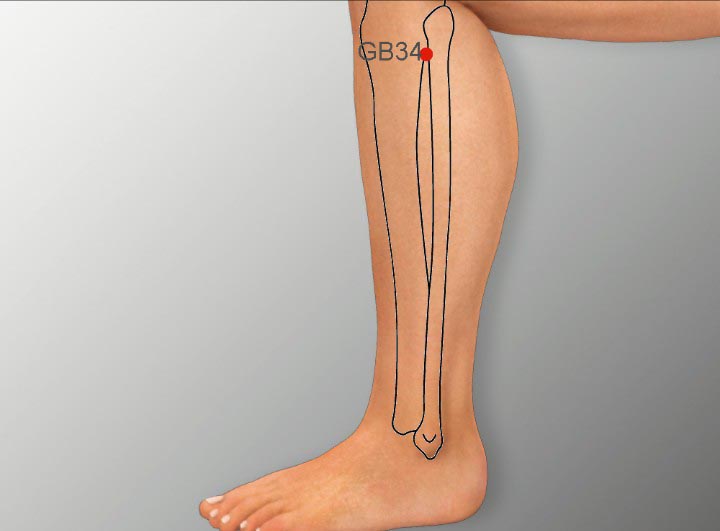
Location: On the lateral side of the lower leg, in the depression anterior-inferior to the head of the fibula.
Effect: Relaxes the sinews, unblocks the collaterals, relieves pain.
7. Tender points in the lumbosacral region
Location: In the lumbosacral region.
Effect: Unblocks the collaterals, relieves pain, promotes joint function.
8. Local tender points
Location: In the area of pain.
Effect: Unblocks the collaterals, relieves pain.
Moxibustion treatment methods
1. Neck and Back
(1) Mild moxibustion on local tender points. The patient should feel the heat penetrate deeply and expand over the area with local tightness, pressure, soreness, distention and pain.
(2) Single-point mild moxibustion on BL 43 of the affected side. The patient should feel the heat penetrate deeply, expand over the area or transmit to the upper limbs. In some patients, the heat will reach the wrist. If it fails to do so, use relaying moxibustion with another moxa stick on the most distal place the heat has reached to cause it to transmit to the wrist. Finally, administer mild moxibustion on BL 43 and the wrist with two moxa sticks. Located on the foot Taiyang bladder channel, BL 43 can unblock the collaterals and relieve pain.
(3) Single-point mild moxibustion on GV 9. The patient should feel the heat penetrate deeply, or transmit along the Du Mai or to the affected area. Located on the Du Mai, GV 9 can warm the Du Mai, unblock yang and relieve pain.
2. Lumbosacral region
(1) Mild moxibustion on tender points in the lumbosacral region. The patient should feel the heat penetrate deeply, expand over the area or feel local tightness, pressure, soreness, distention and pain.
(2) Single-point mild moxibustion on GV 3. The patient should feel the heat penetrating deeply, or transmitting along the Du Mai or to the affected area. Located on the Du Mai, GV 3 can warm the Du Mai, dissipate cold, unblock the collaterals and relieve pain.
(3) Single-point mild moxibustion on BL 25 of the affected side. The patient should feel the heat penetrate deeply, expand over the area or transmit to the lower limbs. In some patients, the heat transmission will reach the ankle. If it fails to do so, use relaying moxibustion with another moxa stick on the most distal point the heat has reached to cause it to transmit to the ankle. Finally, administer mild moxibustion on BL 25 and the ankle with two moxa sticks. Located on the foot Taiyang bladder channel, BL 25 can rectify qi, unblock the collaterals and relieve pain.
3. Upper limbs
(1) Mild moxibustion on local tender point. The patient should feel the heat penetrate deeply, expand over the area, or feel local tightness, pressure, soreness, distention and pain.
(2) Single-point mild moxibustion on LI 10 on the affected side. The patient should feel heat transmit along the hand Yangming large intestine channel. Located on the hand Yangming large intestine channel, LI 10 can dredge the channels, unblock the collaterals, disperse swelling and relieve pain.
4. The Lower Limbs
(1) Mild moxibustion on local tender points. The patient should feel the heat penetrate deeply and expand over the area with local tightness, pressure, soreness, distention, and pain.
(2) Single-point mild moxibustion on GB 34 on the affected side. The patient should feel the heat penetrate deeply or transmit along the foot Shaoyang gallbladder channel. GB 34, the he-sea point of the foot Shaoyang gallbladder channel and the meeting point of the sinews, can relax the sinews, unblock the collaterals and relieve pain.
Treat once a day, choosing two or three groups of the above acupoints each time. Ten treatments make a treatment course. In total, give two courses with two to five days in between for rest.
Conclusion
Moxibustion can effectively treat myofascial pain, and early diagnosis and intervention improve the effect. If there are indurations in the muscle, the course of treatment will be longer. Medicinal point injections can be administered if necessary.
Patients should avoid wind-cold and excessive air conditioning in summer.

